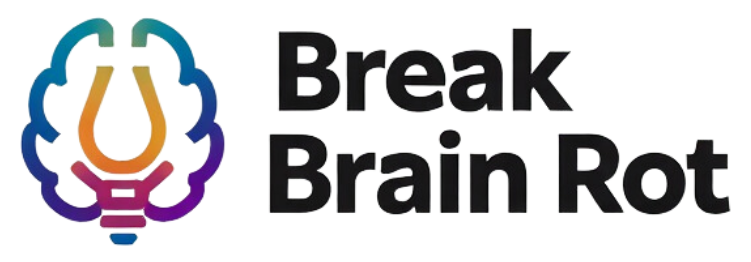Imagine breaking free from the constant buzzing of phones, endless scrolling, and overwhelming screen fatigue. In today’s tech-driven world, digital burnout has become a common challenge as more and more people struggle to find balance in an age of hyper-connectivity. It’s no wonder that terms like “screen time detox” and “digital detox strategies” have gained traction lately.
But what if there was a proven path to address the negative effects of digital burnout while simultaneously promoting mental clarity? That’s where mindfulness techniques come into play. Mindfulness techniques for digital burnout recovery offer an empowering and practical approach to regaining control over your mental and emotional well-being. In this article, we’ll explore how these practices work and how you can integrate them into your routine for lasting recovery.
Table of Contents
- Understanding Digital Burnout and Its Impact on Mental Health
- Why Mindfulness is Effective for Digital Burnout Recovery
- Top Mindfulness Techniques for Digital Burnout Recovery
- Integrating Mindfulness Into Your Daily Routine
- Benefits of Long-Term Practice for Digital Burnout Prevention
- FAQs
- Conclusion
Understanding Digital Burnout and Its Impact on Mental Health
Signs and Symptoms of Digital Burnout
Digital burnout manifests in various ways, including feeling mentally drained after prolonged screen use, experiencing stress or irritability, and struggling to focus on tasks. Physical symptoms like headaches or eye strain often accompany these mental effects, signaling that the body is craving a break from screen dependency.
How Excessive Technology Use Contributes to Burnout
The overstimulation caused by constant notifications, messages, and endless digital interactions can overwhelm the brain. This continuous connectivity leaves little room for relaxation, leading to not only mental fatigue but also emotional stress as individuals struggle to manage their digital lives.
Statistics on Digital Burnout
Research highlights the extent of digital burnout in today’s society. According to a recent report, over 73% of adults feel overwhelmed by their daily screen use, and nearly 60% of employees admit that workplace technology contributes to their stress levels.
Why Mindfulness is Effective for Digital Burnout Recovery
The Science Behind Mindfulness
Mindfulness operates by calming the nervous system, allowing the brain to respond to external stimuli with greater clarity. Research consistently shows that mindfulness can significantly reduce stress and improve focus, making it an ideal tool for those dealing with digital burnout. Studies have even demonstrated its impact on lowering cortisol levels, the body’s primary stress hormone.
Bridging the Gap Between Awareness and Behavior
Mindfulness encourages individuals to become more attuned to their triggers, such as overusing social media or reacting impulsively to notifications. This enhanced awareness enables healthier behaviors, fostering a more balanced relationship with technology.
Personal Success Stories of Mindfulness Practices
Incorporating mindfulness into daily routines has helped countless individuals overcome digital burnout. Many share how practices like mindful breathing and tech-free days allowed them to regain clarity and emotional control.
Top Mindfulness Techniques for Digital Burnout Recovery
Breathing Exercises to Reclaim Focus
Intentional, deep breathing is a cornerstone of mindfulness. Techniques like box breathing—inhale for four counts, hold for four counts, exhale for four counts, and pause—can instantly reduce stress levels and refocus your mind.
Mindful Disconnects
Designate specific times in your day to disconnect completely from technology. Create tech-free zones in your home and practice mindful media consumption by limiting unnecessary screen time. Learn more in our guide to digital detox strategies for modern professionals.
Body Scan Meditation for Grounding
This meditation helps identify areas of tension that often build from sitting at screens for prolonged periods. By directing your focus to each part of the body, you can release tension and restore a sense of physical and mental balance.
Practicing Gratitude Amidst Technology Use
Gratitude journaling amidst your digital routines can foster a more positive mindset. Reflect on the benefits technology provides while maintaining boundaries to ensure it doesn’t dominate your life.
Integrating Mindfulness Into Your Daily Routine
Creating a Digital Mindfulness Schedule
Schedule times specifically dedicated to mindful interactions with technology. Start your day with intentional tech use, prioritize breaks, and avoid using devices an hour before bedtime.
Using Mindfulness Apps as a Gateway
Mindfulness apps like Headspace or Calm can guide you through meditation sessions and breathing exercises. The structured frameworks these apps provide make it easy for beginners to ease into mindfulness practices.
Setting Posture and Eye-care Alerts
Use reminders on your phone or smartwatch to prompt regular posture adjustments and breaks for your eyes. This helps mitigate the physical toll of screen use.
Benefits of Long-Term Practice for Digital Burnout Prevention
Enhancing Productivity and Creativity Over Time
With continuous mindfulness practice, your ability to focus and think creatively improves as digital distractions lose their grip on your attention.
Building Emotional Resilience and Self-Control
Mindfulness equips you with tools to handle emotional triggers related to overstimulation, enabling you to maintain composure in the face of tech-induced stress.
Strengthening Relationships by Breaking the Tech Barrier
By reducing the dominance of screens in your interactions, mindfulness fosters deeper, more meaningful relationships. Check out our comprehensive guide on mindfulness and its impact on relationships.
Frequently Asked Questions
What are the best mindfulness techniques for digital burnout recovery for beginners?
Breathing exercises, body scan meditations, and gratitude journaling are excellent starts for beginners.
How long does it take to experience results with mindfulness techniques for digital burnout recovery?
Consistency is key! Many report noticeable changes within a few weeks of daily practice.
Can mindfulness techniques for digital burnout recovery be used to prevent future burnout?
Absolutely. Regular mindfulness practice builds resilience and helps maintain balanced usage of technology.
Conclusion
In a world dominated by screens, digital burnout is a reality for many. However, mindfulness techniques for digital burnout recovery offer a light at the end of the tunnel. These powerful practices can help you manage stress, improve focus, and foster a healthier relationship with technology over time. Take the first step today by trying a simple breathing exercise or setting aside a tech-free hour in your daily routine. Your mind will thank you!


